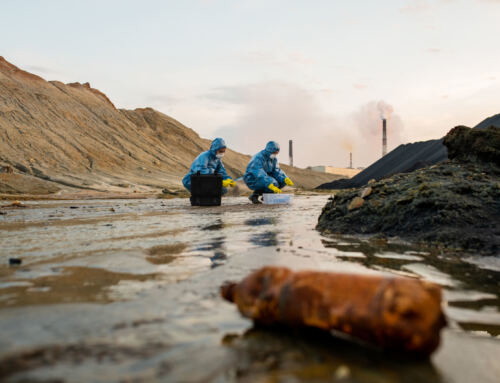Over the last 18 months, the loss of life and livelihoods, disruptions, and lockdowns have certainly helped the COVID-19 causing virus to get under our skins. But, what is the entry mechanism that allows a virus like this to infiltrate on such an epic scale? Get ready to find out just how essential glycosylation of the SARS-CoV-2 spike protein plays in taking virus infectivity mainstream.
- Proteins and glycans – the gruesome twosome
- Glycans in super stealth mode
- In come the good guys
Let’s be clear, pandemics don’t just spread through low levels of handwashing or being sloppy about the aim of your next cough. These are definite factors. However, the pointy end of the problem is identifying the actual place of cell violation when working with glycans. These polysaccharide compounds consist of multiple monosaccharide subunits linked together across a glycoside bond. The structural characterizations of these complex carbohydrates make it virtually impossible to study them through experimental biology. So how is it done?
Looking for answers, we put our questions to glyco-specialist, Dr Elisa Fadda, a chemist by training who has crossed into biophysics. She explains,
“We’re talking about molecules that are chemically extremely flexible, all single-bond linked, with some bonds more mobile than others. On top of that, carbohydrates unlike proteins or nucleic acid, are branched polymers that don’t go linearly but in any direction. They have different hydroxyl groups that can be functionalized with other branches, and all of them have the ability to move independently of their own structure.”
These molecules are further complicated because they are ‘folded’ proteins with several structural levels, arguably down to a quaternary layer. The glycans move so fast, even retaining dynamics in cryogenic environments, that usual experimental methods can’t capture them pictorially. Try to capture a single frame, and like any still image of a fast-moving object, the result is a nondescript blur.
Proteins and glycans – the gruesome twosome
With no other experimental methods, such as NMR able to create an image or produce information within the necessary rapid time scale, Dr Fadda has turned to computational testing methods for best results. The route has made it possible for an ensemble structure to be fitted within the blur that captures molecule dynamics in real-time, taken at nanoseconds rather than microseconds.
Various proteins that travel the circulatory pathway are glycosylated i.e. undergo a reaction where a carbohydrate molecule attaches to a functional group of other molecules, such as a hydroxyl. Two- to three- percent of the human genome is dedicated to glycosylated proteins and they are found on the cell surface, inside the cell as well as circulating in the body. Producing such a structure is an enormously complex process and one that cells do not invest their energy and evolution in lightly.
Years of applied investigation by different areas of science has discovered that glycans are not template-driven, so hold no information in DNA for mapping. It’s the intrinsic properties of glycosylated proteins that allow them to fold, preserve their structure and permit protein-trafficking outside of a cell. With the protein either embedded in the cell membrane or secreted outside, the glycans rally to perform an enormous range of functions mediating protein and protein interaction. This makes glycans the first port of entry for toxins, bacteria, and viral infections.
Glycans in super stealth mode
But glycans don’t stop there. Illnesses like COVID are considered ‘enveloped viruses’ as their glycans come wrapped in a membrane outside of fusion spike proteins or peplomers. Spike proteins are so named as they are glycoproteins, sticking out from the surface of a virus particle lipid bilayer. They are the actual trigger that grants the virus the freedom to enter.
One thing all spike proteins have in common, aside from being folded, is their shape. Dr Fadda explains,
“They look a lot like mushrooms and get covered in glycans to a greater or lesser degree depending on the virus. In mass, this ‘glyco fur’ gives the virus an evolutionary advantage, helping to camouflage it from the host immune system. Without the protection of this ‘glycan shield,’ the immune system would immediately recognize it as a foreign entity and attack.”
The virus’s skulduggery doesn’t even stop there. During replication, it uses its host’s own cell machinery to glycosylate, placing host glycans on its own proteins to dress them as humans. It’s not that the immune system cannot recognize anything with a glycan, it’s that it believes these are its own cells and leaves them alone. This level of deception makes building an immune response and designing a vaccine immensely difficult. The glycosylation coat is like a carbohydrate forcefield that’s not only able to infect new cells but takes an important role in enabling spike proteins to bind to host cells.
In come the good guys
Even with coronavirus in the bloodstream, changing or mutating the glycosylation removes its opportunity to bind to cells. Alter glycan levels, decorate them in other ways, and with selective inhibition of different pathways it’s possible to create a non-functioning form of glycosylation. Do this and the number of circulating viruses heavily reduces as effective replication is no longer possible. The result is a far milder infection the body can easily eliminate.
The glycan shield is a characteristic shared by all envelope viruses. Studying its whole evolution, and not just the protein elements, will help to tackle the spread of viral infiltration beyond coronavirus, including HIV, influenza, SARS, herpes virus and Lassa virus. The same process will also give insight into therapeutic strategies, vaccine design and vaccine optimization for these viruses.
We’ll leave the conclusion to Dr Fadda.
“Viruses are an evil machinery but one that can and should be understood. I’m not on the virus’s side, but it is extremely clever. You need to consider the glycans interactions between the virus and the cell. If you don’t take that into consideration, you’re missing the story completely. Follow any revelations closely, in this case a fully glycosylated protein, and you’ll understand how to solve the problem. If you don’t, and if this was a murder mystery, you’re suspecting the totally wrong person of the crime and probably diverting a lot of energy and effort into something that is never going to be as successful.”






